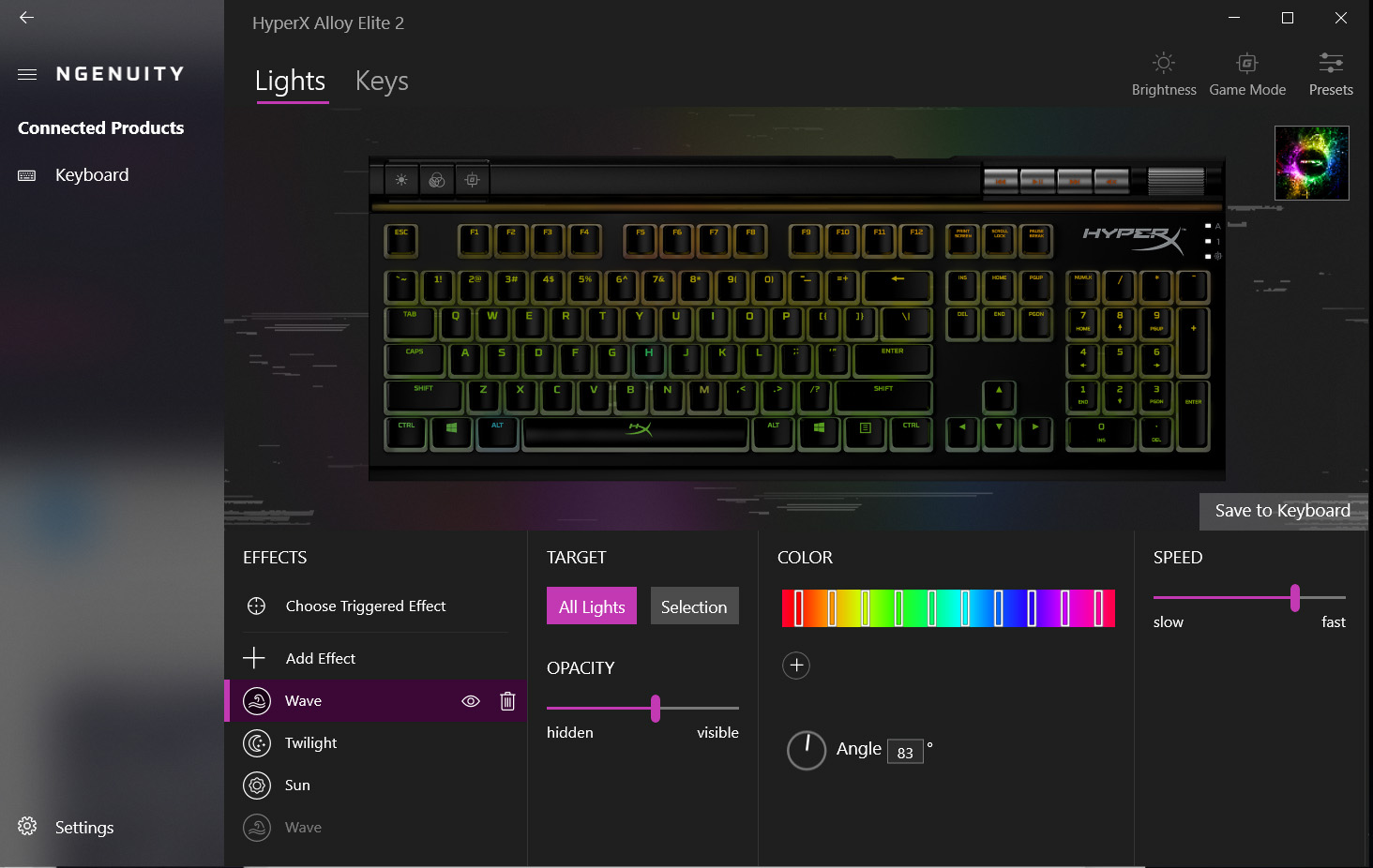From there, we move into the differences, which are vast. On the physical side of things, there is now no longer a plastic wrist rest packaged with the keyboard, nor are there special textured W, A, S, D, and 1-4 keys included. Instead, all of the keys are super luminous HyperX Pudding Keycaps (which I’ve reviewed separately in the past) that are more durable and oil-resistant than your typical caps. Additionally, while the Alloy Elite used Cherry MX switches (mine came with Cherry tactile Browns), the Alloy Elite 2 houses HyperX switches, and at that moment only currently supports HyperX linear Reds. I’m a fan of the in-house HyperX switches, and I’ve talked about them at length in my Alloy Origins review.

On the software side of things, the Alloy Elite focused on plug-and-play and did not have much in the way of lighting options. The Alloy Elite RGB, which I didn’t review, added in more software options and lighting effects. The Alloy Elite 2 continues this trend, supporting the same NGenuity software seen in the recent Alloy Origins keyboards. There are 7 looping lighting effects (Breathing, Confetti, Swipe, Solid, Twilight, Wave, and Sun) which can be layered on top of each other as desired as well as 3 triggered lighting effects (Flame, Explosion, and Fade) where one can be selected per lighting profile. Individual keys can be mapped to various keyboard and mouse functions, multimedia options, macros, and windows shortcuts, or be outright disabled.

Let’s start with the two areas of improvement that I can pinpoint for the Alloy Elite 2. I miss the multi-layered feet that have been rolled out with the most recent Alloy Origins boards and, unfortunately, like the Alloy Origins, the NGenuity software used for the Alloy Elite 2 must be accessed by a Windows 10 account (despite the keyboard being supported for Windows 7, 8, 8.1, and 10). Those are my two quibbles. Everything else is fantastic.